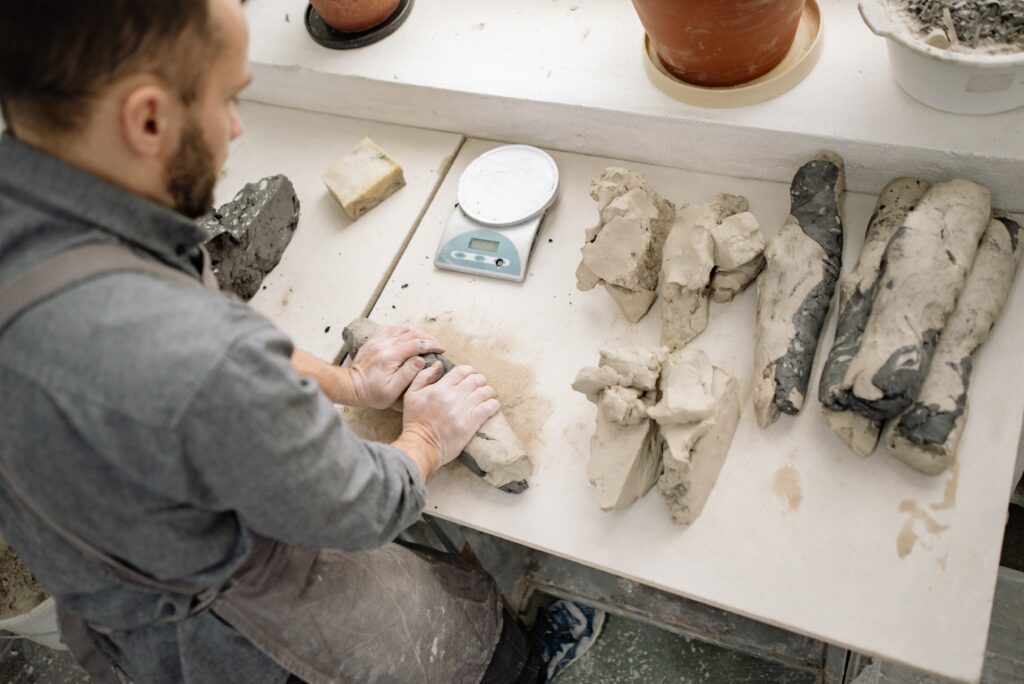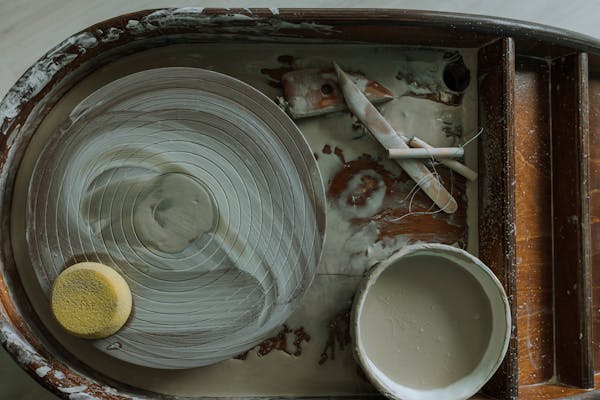Explore a Low-Cost Method to Make a Pottery Wheel at Home and Start Creating Pottery
Are you an aspiring potter with a limited budget? Don’t worry! In this comprehensive guide, we will show you how to make a pottery wheel at home using affordable materials. You don’t have to break the bank to pursue your passion for pottery. With our easy homemade solution, you can start creating beautiful pottery pieces right in the comfort of your own home. Let’s dive into the world of budget-friendly pottery wheels!

At YourPotteryWorkshop.com, we understand the importance of making pottery accessible to everyone. We believe that financial constraints should not hinder your creative journey. That’s why we provide valuable resources, including pottery tutorials, product recommendations, and inspirational content, to support your pottery endeavors, even on a tight budget.
Materials You’ll Need: Before we get started, let’s gather the materials required to create your homemade pottery wheel on a budget. These materials are readily available and won’t break the bank:
- Sturdy wooden base or repurposed furniture
- Large round object for the wheelhead (e.g., an old bicycle wheel or a sturdy plastic disc)
- Bearings or lazy Susan hardware for smooth rotation
- PVC pipes and fittings for the frame and support
- Electric motor or cordless drill for spinning the wheelhead
- Speed controller for adjusting the wheel speed
- Screws, bolts, and nuts for assembly
- Sandpaper, paint, and varnish for finishing touches

Step-by-Step Guide:
- Prepare the Base: Find a sturdy wooden base or repurpose an old furniture piece that can serve as the foundation for your pottery wheel. Ensure it is stable and level. Sand and paint the base to give it a polished look.
- Create the Wheelhead: Attach a large round object, such as an old bicycle wheel or a sturdy plastic disc, to the center of the base. This will act as the wheelhead for your pottery creations. Make sure it is securely fastened.
- Install Bearings or Lazy Susan Hardware: To ensure smooth rotation, install bearings or a lazy Susan hardware system beneath the wheelhead. These components will provide stability and ease of movement while you work with clay. Follow the manufacturer’s instructions for proper installation.
- Construct the Frame and Support: Using PVC pipes and fittings, construct a frame and support structure for your pottery wheel. This will provide stability and keep the wheelhead at a comfortable working height. Be creative and customize the design according to your needs.
- Connect the Motor or Cordless Drill: Attach an electric motor or cordless drill to the frame, aligning it with the wheelhead. This will provide the spinning motion for your homemade pottery wheel. Use screws, bolts, and nuts to securely connect the motor or drill. Don’t forget to incorporate a speed controller to regulate the wheel’s rotation speed.
- Fine-tune and Test Your Homemade Pottery Wheel: Once all the components are in place, double-check the stability and alignment of your homemade pottery wheel. Make any necessary adjustments to ensure smooth rotation and optimal functionality. Test the wheel by turning on the motor or cordless drill and adjusting the speed controller. Congratulations! You have successfully created a pottery wheel on a budget.

Explore More Pottery Techniques and Inspiration at YourPotteryWorkshop.com: Now that you have your very own homemade

